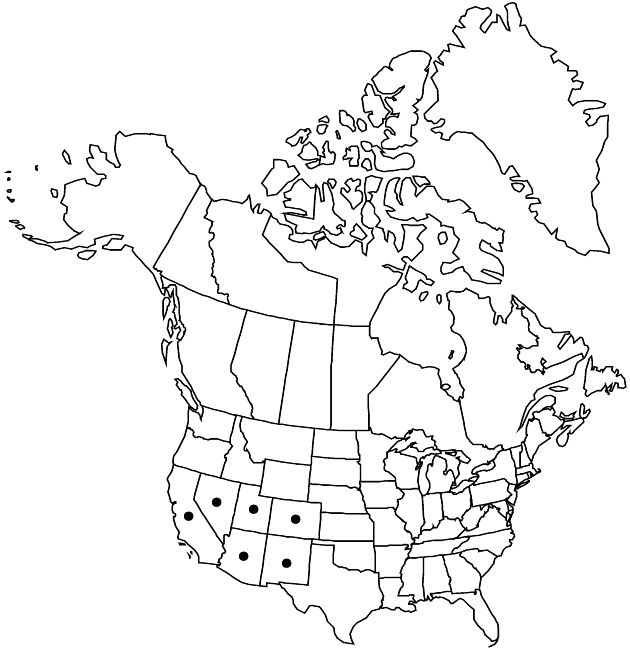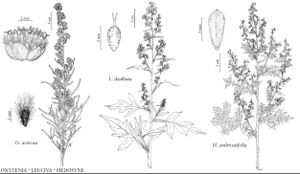Difference between revisions of "Oxytenia acerosa"
Proc. Acad. Nat. Sci. Philadelphia 4: 20. 1848.
IllustratedEndemic
Synonyms: Euphrosyne acerosa (Nuttall) Panero Iva acerosa (Nuttall) R. C. Jackson
Treatment appears in FNA Volume 21. Treatment on page 29.
imported>Volume Importer |
imported>Volume Importer |
||
| Line 60: | Line 60: | ||
|publication year=1848 | |publication year=1848 | ||
|special status=Illustrated;Endemic | |special status=Illustrated;Endemic | ||
| − | |source xml=https:// | + | |source xml=https://bitbucket.org/aafc-mbb/fna-data-curation/src/2e0870ddd59836b60bcf96646a41e87ea5a5943a/coarse_grained_fna_xml/V19-20-21/V21_52.xml |
|tribe=Asteraceae tribe Heliantheae | |tribe=Asteraceae tribe Heliantheae | ||
|subtribe=Asteraceae (tribe Heliantheae) subtribe Ambrosiinae | |subtribe=Asteraceae (tribe Heliantheae) subtribe Ambrosiinae | ||
Latest revision as of 20:12, 5 November 2020
Leaves: petioles 0–20+ mm; blades or lobes mostly 20–150 × 1–1.5(–3) mm. Peduncles 1–3+ mm. Involucres 2–3+ mm. Phyllaries: outer 5–7 ± herbaceous, sericeous to strigillose, inner scarious to membranous, usually villous. Functionally staminate florets: corollas 2.5–3 mm. Paleae 1.8–2+ mm. Cypselae 1.5–2.5 mm. 2n = 36.
Phenology: Flowering Jun–Sep.
Habitat: Wet or seasonally wet, alkaline soils
Elevation: 100–2200 m
Distribution

Ariz., Calif., Colo., Nev., N.Mex., Utah.
Discussion
Selected References
None.
Lower Taxa
None.
